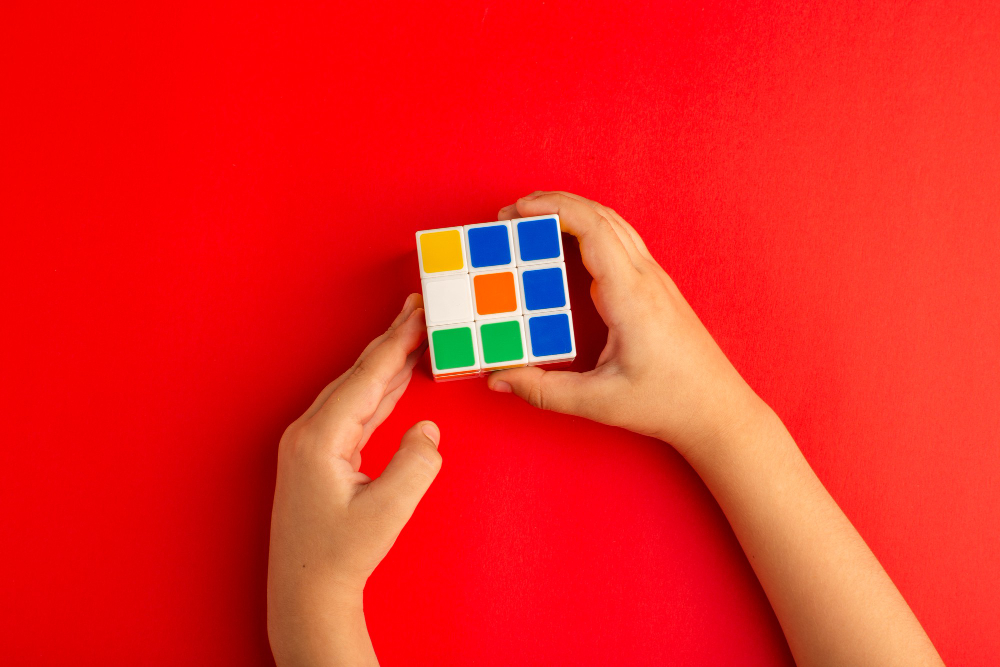
3×3 Cube Solver: Essential Strategies for Quick and Efficient Solving
The 3×3 Rubik’s Cube, a puzzle that has intrigued and challenged millions worldwide, can be solved with a variety of strategies that range from beginner-friendly methods to complex algorithms used by speedcubers. This guide delves into essential strategies to use with a cube solver 3×3, designed to enhance your solving speed and efficiency. We will explore foundational techniques, intermediate strategies, and tips for refining your solving process.
1. The Layer-by-Layer (LBL) Approach
Foundational Steps
The Layer-by-Layer approach is one of the most accessible methods for beginners and serves as the foundation for more advanced techniques. It involves solving the cube in three stages:
- First Layer Cross: Start by creating a cross on one face, typically the white. Ensure the edges of the cross match the center pieces of the adjacent sides.
- First Layer Corners: Insert the corners of the first layer, making sure each one aligns with the center colors.
- Second Layer Edges: Without disrupting the completed first layer, place the edges of the middle layer.
This method is excellent for beginners as it requires fewer algorithms and allows for a clear understanding of the cube’s mechanics.
Advanced Application
To transition this basic understanding into quicker solves, focus on improving your finger tricks and lookahead ability, which minimizes downtime between moves.
2. The Fridrich Method (CFOP) – Speedcubing’s Favorite
The Four Stages of CFOP
The Fridrich Method, also known as CFOP (Cross, F2L, OLL, PLL), is a popular choice among competitive speedcubers. It’s designed for efficiency and speed:
- Cross: Similar to LBL, but typically performed on the bottom face to better observe unsolved elements.
- F2L (First Two Layers): Combine the steps of inserting the first layer corners and second layer edges into one. This is done by inserting both the corner and the corresponding middle-layer edge simultaneously.
- OLL (Orientation of the Last Layer): Orient all the top face pieces to show the same color, without regard to their position.
- PLL (Permutation of the Last Layer): Permute the pieces of the last layer to complete the cube.
Mastering F2L
F2L can significantly reduce the number of moves and time if mastered properly. Practice different scenarios to understand the best way to insert various corner-edge pairs.
3. Roux Method – An Intuitive and Minimalistic Approach
Understanding Roux
The Roux method offers a different philosophy for solving the cube solver 3×3. It focuses on building blocks rather than layers:
- Left and Right Blocks: Instead of forming a cross, solve the left and right sides of the cube, forming two large blocks.
- CMLL (Corners of the Last Layer): Solve the remaining corners of the last layer.
- Finish the Last Six Edges (LSE): Solve the remaining edges in the last layer using a series of M (middle layer) moves.
Benefits of Roux
The Roux method uses fewer moves on average than CFOP and can be faster due to reduced reliance on complex algorithms. It’s highly intuitive and emphasizes understanding over memorization.
4. Advanced Techniques and Considerations
Lookahead Training
Developing good lookahead skills is crucial for improving solving times. This involves planning one’s moves during the current action, thus maintaining a steady flow and reducing pause times.
Algorithm Optimization
Identify which algorithms are slow or awkward and find alternatives or create custom sequences that better suit your solving style. Practice these consistently to reduce solving times.
5. Using a Cube Solver 3×3 Tool
How Cube Solvers Can Assist
A cube solver 3×3 tool is invaluable for learning and refining solving strategies. It can:
- Provide solutions from any scramble.
- Offer step-by-step guides through different methods.
- Help understand and memorize necessary algorithms.
- Analyze your solve for inefficiencies.
Integrating Tools into Practice
While relying solely on a tool can hinder learning, using one to understand complex scenarios or correct mistakes can be beneficial. Regularly cross-reference your manual solves with a solver to find potential improvements.
Conclusion
Whether you are a beginner looking to solve the Rubik’s Cube for the first time or a seasoned cuber aiming to shave off those extra seconds from your record, mastering these essential strategies for the cube solver 3×3 will significantly enhance your ability to solve quickly and efficiently. Remember, the key to success in cubing lies in consistent practice, a deep understanding of the cube’s mechanics, and continual learning and adaptation of new techniques. With these strategies, you’re well on your way to becoming an adept solver, ready to tackle the 3×3 cube with confidence and skill.


